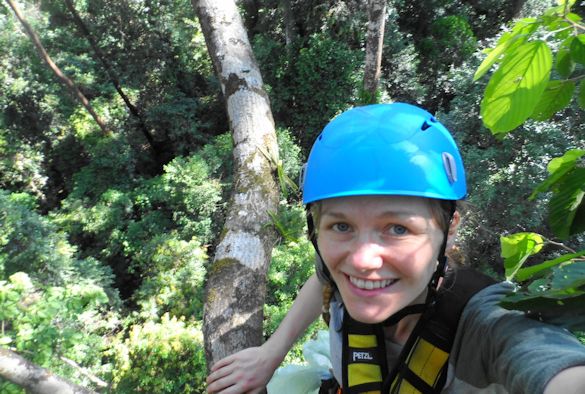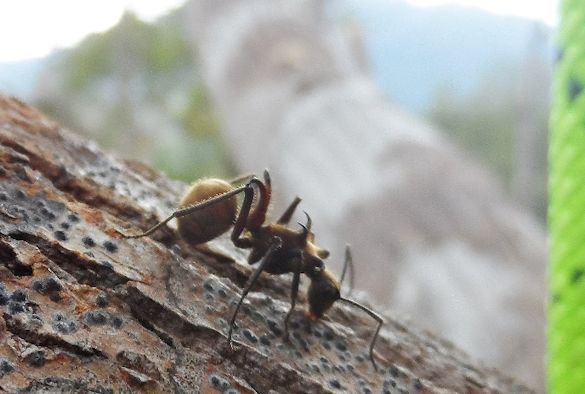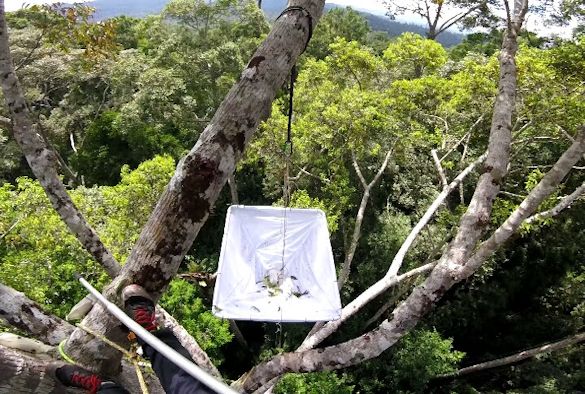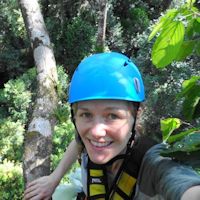Postcard from Maliau Basin Conservation Area, Borneo
Published on

Stephanie Law, a second year PhD student in the University of Liverpool's Department of Earth, Ocean and Ecological Sciences, is currently completing her second field trip to Borneo.
"I am fortunate to conduct the fieldwork for my PhD in Borneo, home to one of the oldest rainforests in the world. For 3 months, I am based in the Maliau Basin Conservation Area, also known as ‘Sabah’s Lost World’ in recognition of its wilderness and large areas that remain unexplored.
Maliau is characterized by a huge, circular basin of pristine forest drained by a single river, the Maliau river, and is bounded by an escarpment that reaches more than 1,600 metres above sea level. This large elevational gradient encompasses a range of forest types, from lowland mixed dipterocarp forest where I work, to tropical heath forest.
I have travelled here to study ants living in the tropical rainforest canopy. Ants dominate invertebrate fauna in tropical rainforests, making up around 60% of the arthropods found both in the ground leaf litter and in the canopy.
Ants fill various ecological roles; as predators, seed dispersers, herbivores and mutualists. Consequently, they have a large impact on ecosystem processes. I am trying to determine the extent to which ground ants influence the distribution of canopy ants, and how ants affect ecosystem processes such as canopy herbivory and forest productivity.
To answer these questions, I am working in experimental plots where ground ants have been suppressed. I have been spending months, both last year and this year, collecting samples of ants and other invertebrates from the canopy.
So, how do we sample the canopy of the tropics' tallest trees? It all starts with a big shot - a huge catapult used to propel a fishing line over a fork at the top of the tree. Using this line, climbing ropes are pulled up and anchored to a second tree. Pulling heavy ropes up and down trees every day is definitely good for building arm strength! Using very long ropes and specialized climbing gear I have been hauling myself up trees that frequently measure over 50 metres tall to set traps, beat vegetation and collect leaf samples.
Working in the rainforest comes with challenges; heat, humidity and mosquitoes spring most immediately to mind. Collecting data from the rainforest canopy presents additional concerns, other than the height there is always the fear of climbing into a bees' nest.
Yet, rainforest research is extraordinary. I have been privileged to see gibbons swinging from adjacent trees whilst climbing; elephants that, despite their size, remain well hidden behind vegetation until you run into them and even a sunbear raiding my kitchen supplies. But most important are the diverse ants I now have in my samples.
Image: Polyrhachis ants are commonly found in the canopy. Notable by the long spines seen in the thorax and petiole.

All of these specimens will be brought back to the lab in Liverpool for identification. Along with the data I collected last year I hope to shed new light on the interactions between ants occupying different strata in the rainforest and how vital they are for the health of our rainforests."
For details on the funkyant team please see http://funkyant.weebly.com/ and for Stephanie Law see http://www.changingfields.com/
Image: Beating is used to collect all invertebrates. This 1 m x 1 m tray is pulled up into the canopy to collect invertebrates that fall when the branch is beaten with a long pole.

